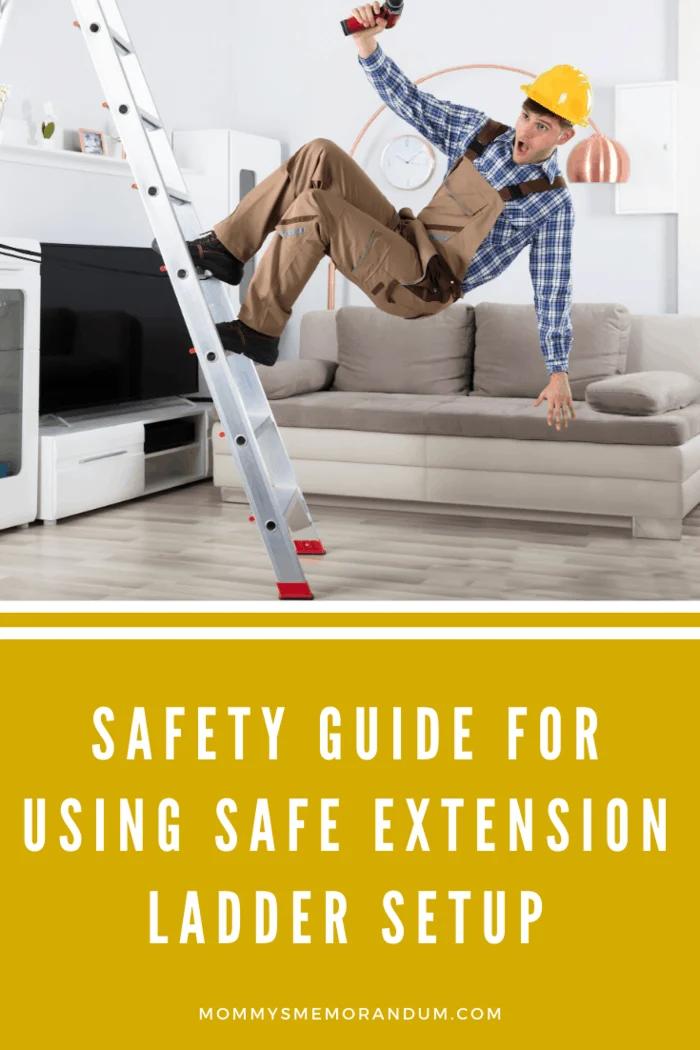You should take every step safely and carefully, especially when climbing a ladder. Being a commonly used tool, a ladder is usually used in home repairs and regularly at construction sites. Users concerned with safety often cut corners, but that might not be the safest way for the entire product range. However, selecting the proper safe extension ladder setup and understanding its use goes a long way in preventing serious injuries and saving unnecessary product costs.
Though all ladders aren’t created equal, they are available in different designs for different conditions and situations to ensure safety while serving your purpose well. Here’s a 7-step guide explained to make things easier for you.

7-step Guide to Buying and Using Safe Extension Ladder Setup
Choosing the Right Type
Different types of ladders like platform, extension, and step ladders are used in job sites or at home. Consider the particular task that you need to perform with it and find the one that ensures you are safe even when standing or climbing.
Choice of Material
Fiberless ladders have non-conductive side rails and are weather-resistant, making them a safe choice for electrical components. On the other hand, aluminum ladders are neither weather-resistant nor non-conductive, but they are durable and light in weight.
Find the Height You Need
When you stand at a higher point on the ladder and climb up, the upper steps can be a risky affair. You have to choose the correct ladder height for the desired work. Its extension should be higher than the support point by a margin of 7-10ft. And, the safe range should not be higher than 4ft from the ladder’s top.
Check the Maximum Load it can Handle
You can refer to the corresponding chart and rating to find each ladder’s weight and how much it can handle with ease. Ladders made for heavy work as well as special duty industrial work are made to hold a load from 250 pounds to 375 pounds. And a medium-duty ladder typically holds 225 lbs, while the capacity of light-duty ladders is 200 lbs.
Inspect a Ladder before Using
While choosing the right material, height, load, and ladder type are essential, and inspection is another vital step in the process. Before using the ladder, inspect it to ensure it’s not structurally damaged. Keeping your ladder clean regularly makes it safer than the one carrying dirt. Check all the moving parts and ensure that they are properly working as well as securely positioned. Never jump up or down on the ladder to check its strength. Also, don’t test the ladder’s integrity using excessive force.
Safety Guidelines
Following these safety tips during ladder use can help prevent any damage or mishappening, either at home or work.

Safety Tips for Climbing
While climbing, it is considered safe to have three limbs on the ladder, either 2 feet, and one hand or two hands and 1 foot.
Ensure that the ladder securely and firmly stands at the ground level.
You can use rungs for grips, but don’t use side rails for pulling yourself up. You have to keep your weight positioned at the ladder’s center.
Don’t climb the ladder having your back towards it.
When climbing on the ladder, you should choose an appropriate shoe type. For example, you can use aptly treaded tennis shoes during lighter jobs.
If possible, don’t use the ladder outside when the weather is bad.
Safety at the Workplace
You should have more than one ladder in hand. Because having an option is better as you can choose the right and safest ladder as per your requirement.
Avoid turning, twisting, or manipulating your body, which can cause imbalance on the ladder.
You should always use a special sawhorse and a correctly equipped ladder without anything cut from it.
All the employees should learn the basics of ladder safety, for which sessions can be organized from time to time.
If you are into commercial, manufacturing, or industrial environment, posting ladder safety rules at an easily visible spot can be helpful.
Accessories
Various accessories are available in the market that can help you work efficiently and securely, such as:
Levelers: It is essential to maintain the ladder level on rough surfaces. Levelers allow you to use a ladder in downhill or sloppy uphill areas, as well.
Stabilizers: Ladder stabilizers are helpful for areas that aren’t easy to reach and high up workplaces. Painters can tackle the trim of the second story and stand with one leg on either side of the windows with a stabilizer. It also makes siding repair, installation, and cleaning gutter tasks.
Project Trays: You can choose from general or purpose-specific project trays, where the latter can be used to hold a painter’s tape, handy tools, a bucket, or brushes.
Following this 7-step guide can help you find the right safe extension ladder setup and use it properly. Also, finding the right accessories can help make your work easier.
